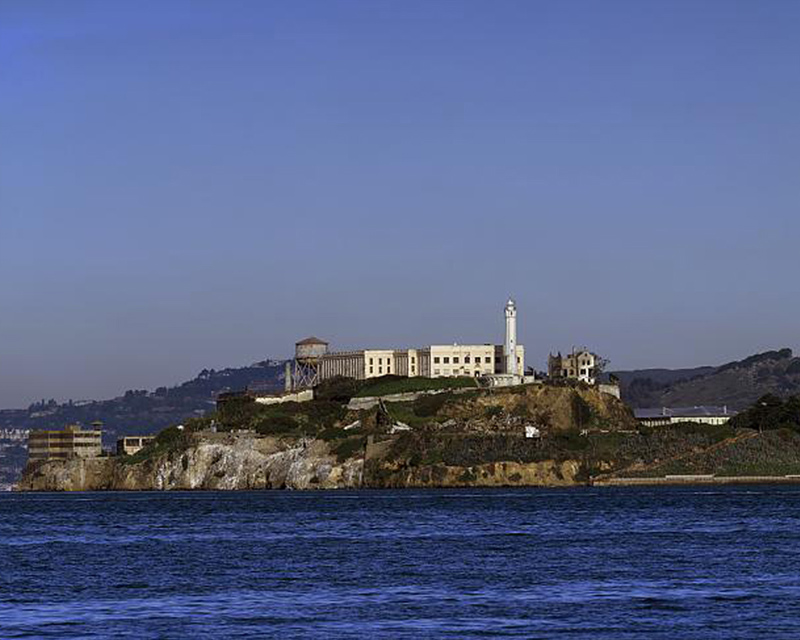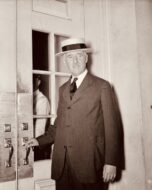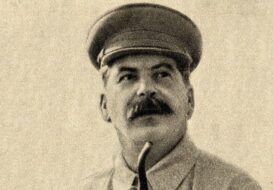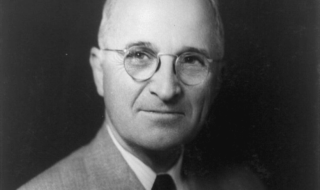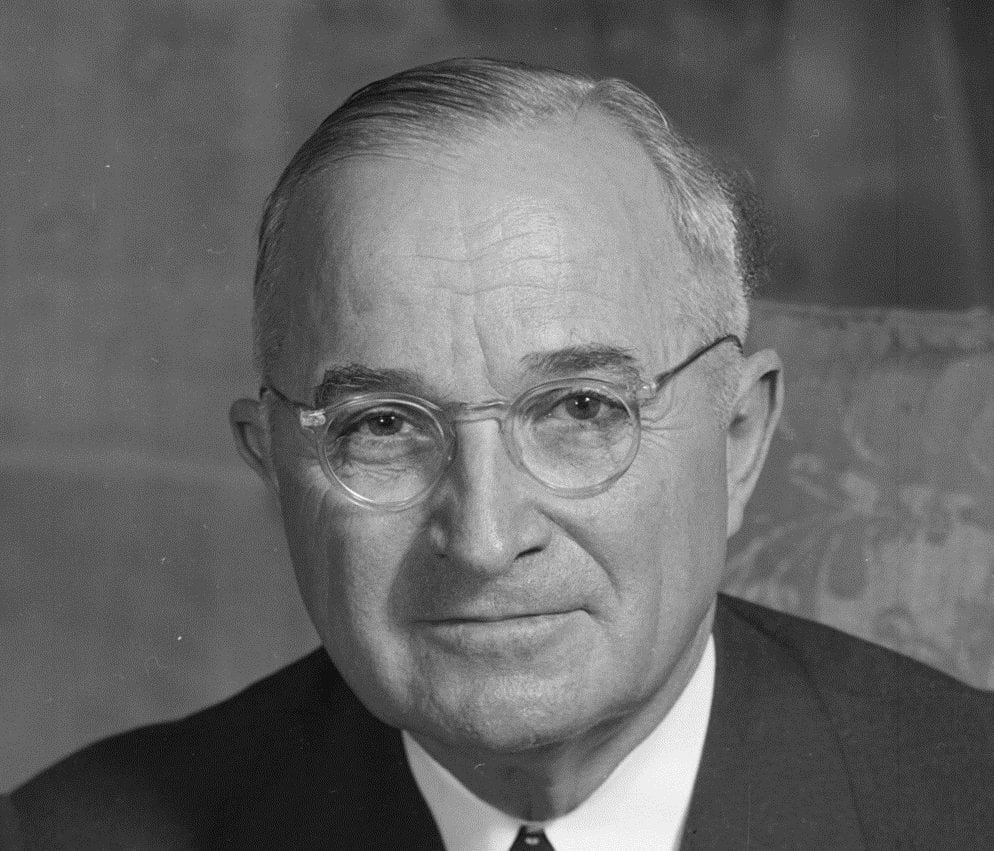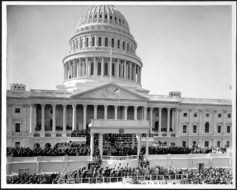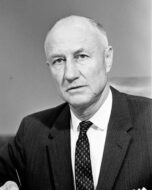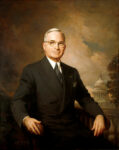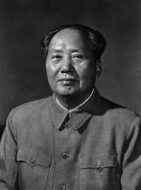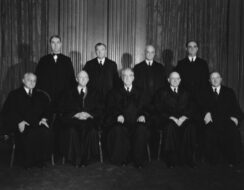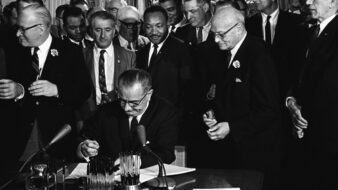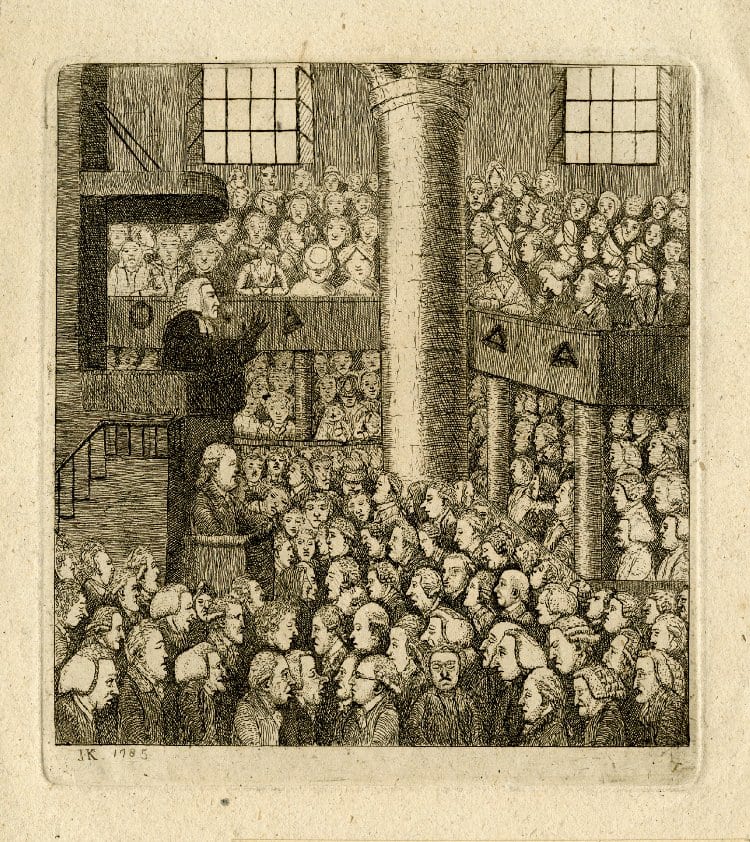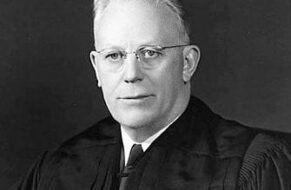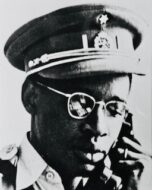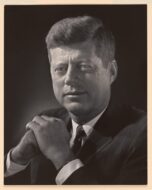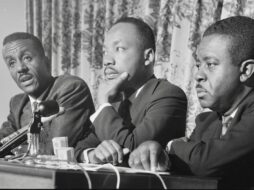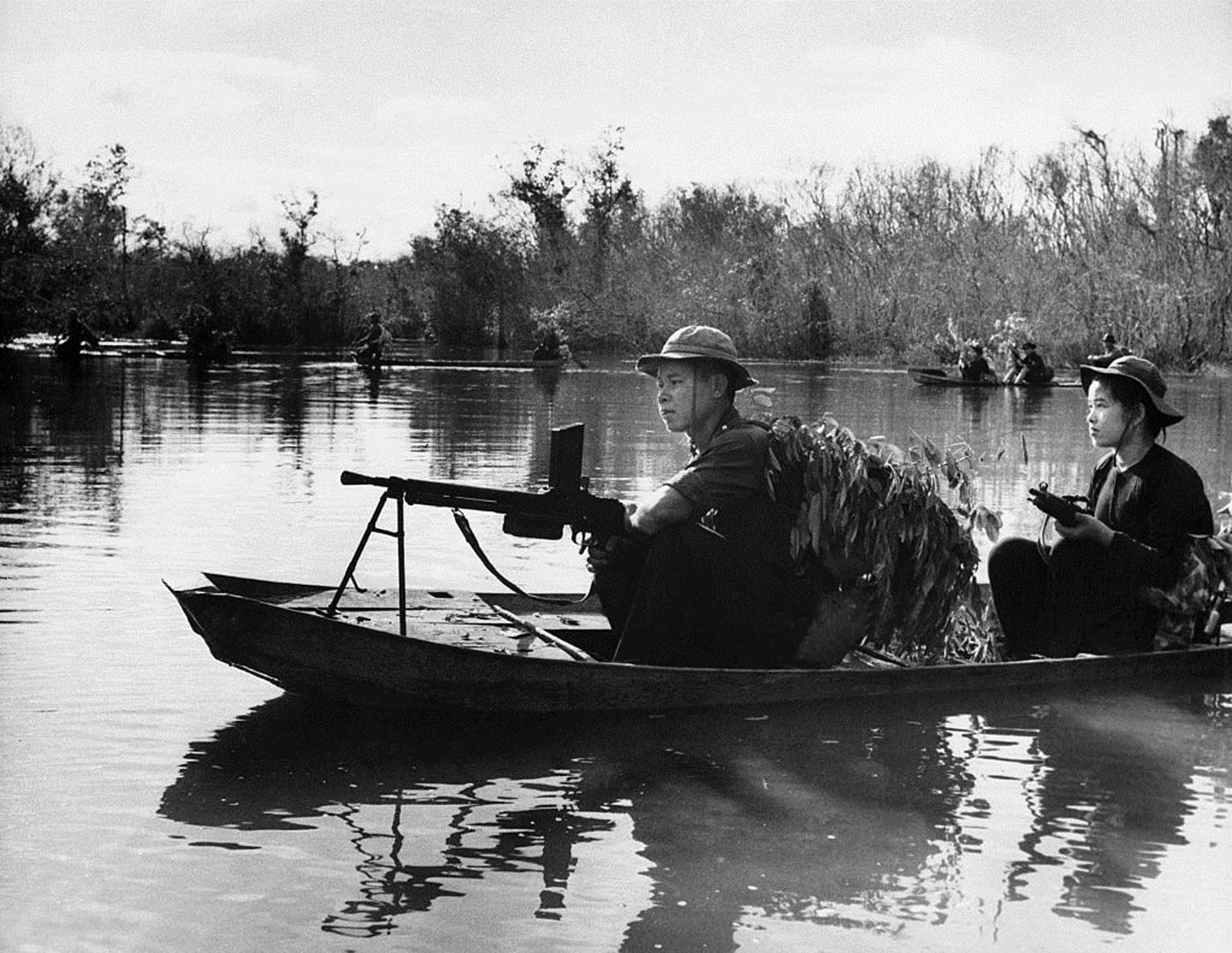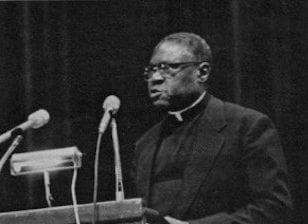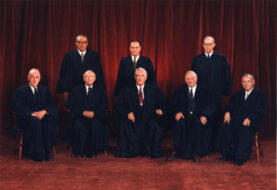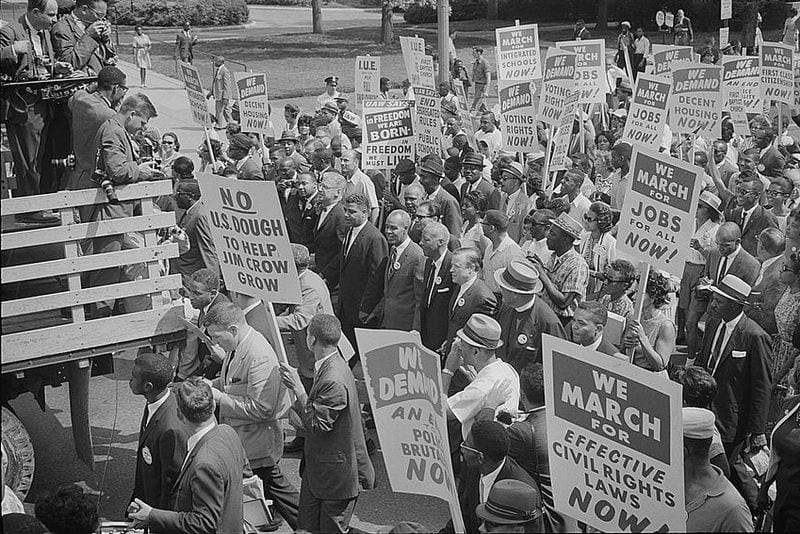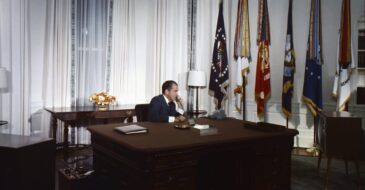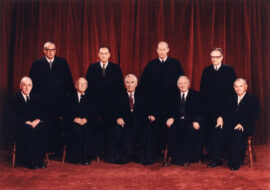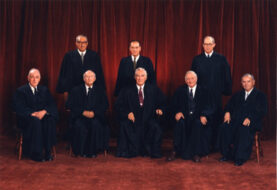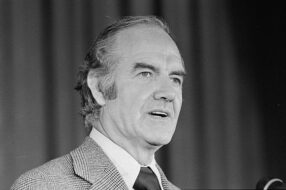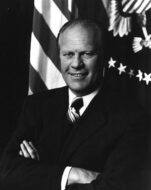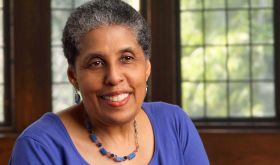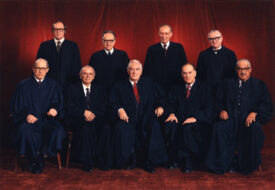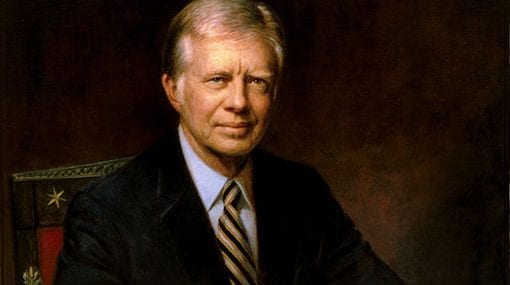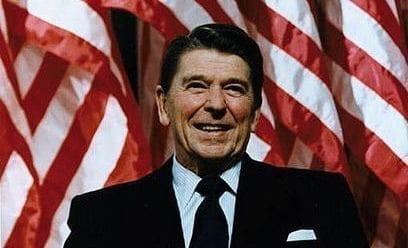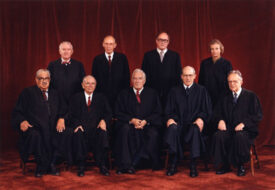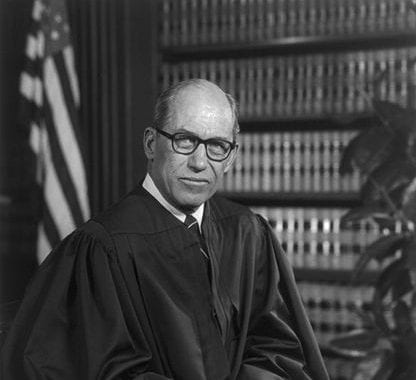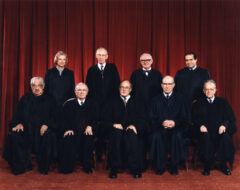Introduction
After World War II, as a result of the federal government’s policy of Termination and Relocation (See House Concurrent Resolution 108 and Reaffirmed Statement on Indian Policy), many American Indians relocated from reservations to cities. In their new homes they sought each other out for fellowship and companionship, and established community centers where they could gather. A sense grew that they were more than just citizens of individual tribal nations—Cherokee, Lakota, or Cheyenne—and out of this new consciousness came the shared term “Native American.” This urban fellowship also cultivated the radical activism of the 1960s and 1970s.
On November 20, 1969, eighty-nine Native Americans led by Richard Oakes (1942–1972), primarily composed of college students at California universities, seized control of Alcatraz Island in San Francisco Bay. Alcatraz had been the site of a federal high-security penitentiary, but the prison had been closed in 1963. Though not all the occupiers were Sioux, and Alcatraz was not part of Sioux territory, they used as their pretext for the seizure a provision of the Fort Laramie Treaty of 1868, which provided that the Lakota could claim within their territory any facility abandoned by the United States. This is the statement read by Oakes after the seizure. The natives, joined by others, held the island for nineteen months.
—Jace Weaver
We, the native Americans, reclaim the land known as Alcatraz Island in the name of all American Indians by right of discovery.
We wish to be fair and honorable in our dealings with the Caucasian inhabitants of this land, and hereby offer the following treaty:
We will purchase said Alcatraz Island for $24 in glass beads and red cloth, a precedent set by the white man’s purchase of a similar island about 300 years ago. We know that $24 in trade goods for these 16 acres is more than was paid when Manhattan Island was sold, but we know that land values have risen over the years. Our offer of $1.24 per acres is greater than the $0.47 per acre the white men are now paying the California Indians for their lands.
We will give to the inhabitants of this island a portion of the land for their own to be held in trust by the American Indian Affairs [sic] and by the Bureau of Caucasian Affairs to be held in perpetuity—for as long as the sun shall rise and the rivers go down to the sea. We will further guide the inhabitants in the proper way of living. We will offer them our religion, our education, our lifeways in order to help them achieve our level of civilization and thus raise them and all their white brothers up from their savage and unhappy state. We offer this treaty in good faith and wish to be fair and honorable in our dealings with all white men.
We feel that this so-called Alcatraz Island is more than suitable for an Indian reservation, as determined by the white man’s own standards. By this, we mean that this place resembles most Indian reservations in that:
- It is isolated from modern facilities, and without adequate means of transportation.
- It has no fresh running water.
- It has inadequate sanitation facilities.
- There are no oil or mineral rights.
- There is no industry and so unemployment is very great.
- There are no health-care facilities.
- The soil is rocky and nonproductive, and the land does not support game.
- There are no educational facilities.
- The population has always exceeded the land base.
- The population has always been held as prisoners and kept dependent upon others.
Further, it would be fitting and symbolic that ships from all over the world, entering the Golden Gate, would first see Indian land, and thus be reminded of the true history of this nation. This tiny island would be a symbol of the great lands once ruled by free and noble Indians.
What use will we make of this land?
Since the San Francisco Indian Center burned down,1 there is no place for Indians to assemble and carryon tribal life here in the white man’s city. Therefore, we plan to develop on this island several Indian institutions:
- A Center for Native American Studies will be developed which will educate them to the skills and knowledge relevant to improve the lives and spirits of all Indian peoples. Attached to this center will be travelling universities, managed by Indians, which will go to the Indian reservations, learning those necessary and relevant materials now about.
- An American Indian Spiritual Center, which will practice our ancient tribal religious and sacred healing ceremonies. Our cultural arts will be featured and our young people trained in music, dance, and healing rituals.
- An Indian Center of Ecology, which will train and support our young people in scientific research and practice to restore our lands and waters to their pure and natural state. We will work to de-pollute the air and waters of the Bay Area. We will seek to restore fish and animal life to the area and to revitalize sea life which has been threatened by the white man’s way. We will set up facilities to desalt sea water for human benefit.
- A Great Indian Training School will be developed to teach our people how to make a living in the world, improve our standard of living, and to end hunger and unemployment among all our people. This training school will include a center for Indian arts and crafts, and an Indian restaurant serving native foods, which will restore Indian culinary arts. This center will display Indian arts and offer Indian foods to the public, so that all may know of the beauty and spirit of the traditional Indian ways.
Some of the present buildings will be taken over to develop an American Indian Museum which will depict our native food and other cultural contributions we have given to the world. Another part of the museum will present some of the things the white man has given to the Indians in return for the land and life he took: disease, alcohol, poverty, and cultural decimation (as symbolized by old tin cans, barbed wire, rubber tires, plastic containers, etc.). Part of the museum will remain a dungeon to symbolize both those Indian captives who were incarcerated for challenging white authority and those who were imprisoned on reservations. The museum will show the noble and tragic events of Indian history, including the broken treaties, the documentary of the Trail of Tears, the Massacre of Wounded Knee,2 as well as the victory over Yellow-Hair Custer and his army.
In the name of all Indians, therefore, we reclaim this island for our Indian nations, for all these reasons. We feel this claim is just and proper, and that this land should rightfully be granted to us for as long as the rivers run and the sun shall shine.
Signed,
Indians of All Tribes
San Francisco, California
November 1969


